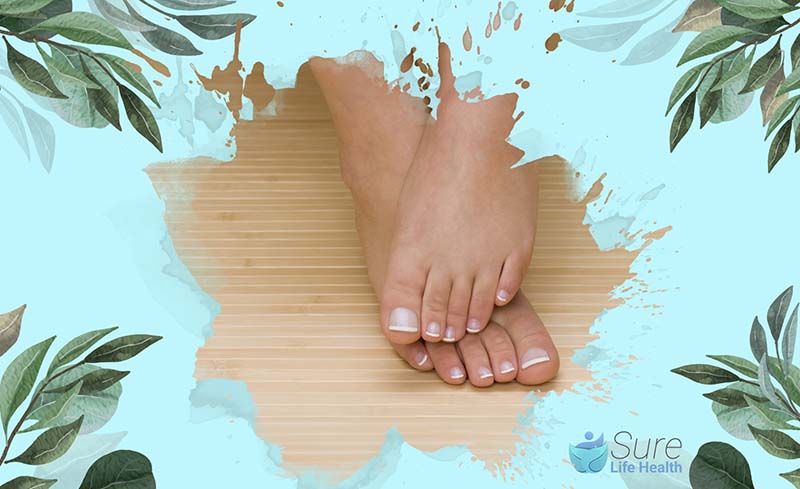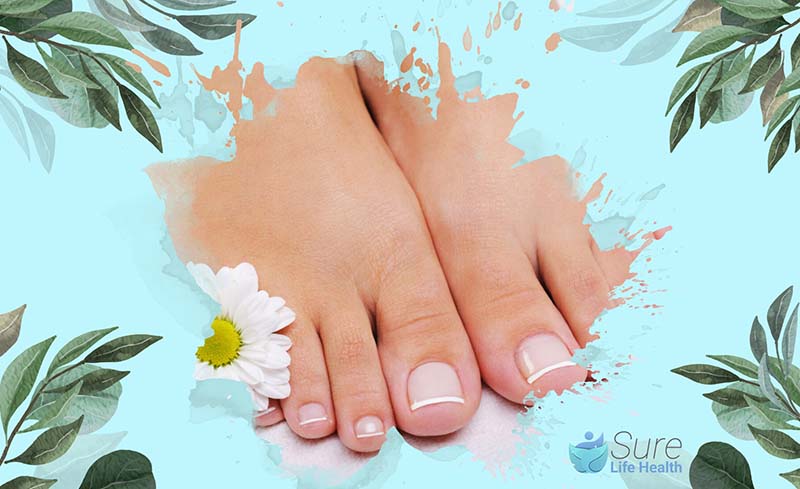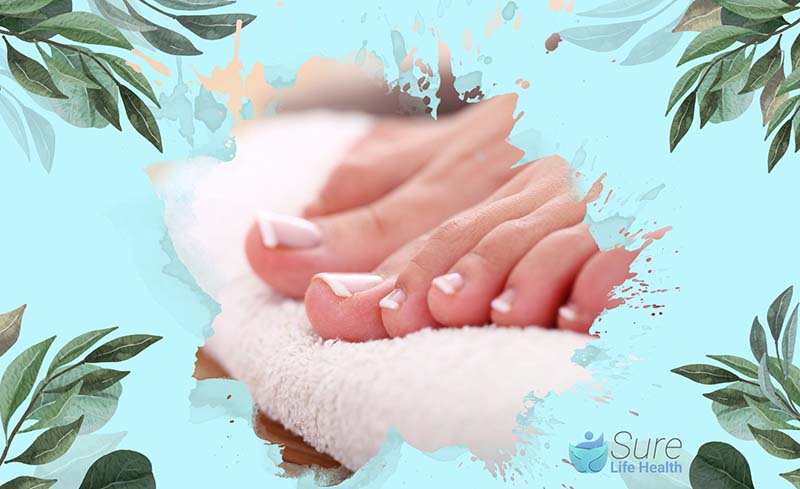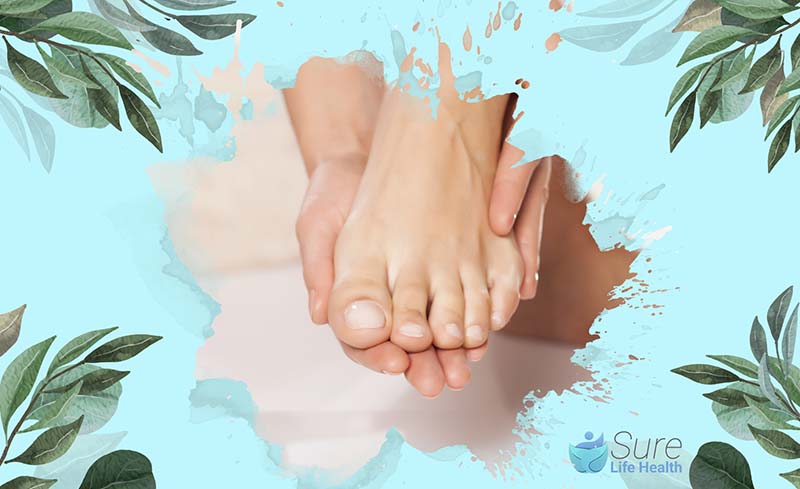Healthy, well-manicured nails are not just aesthetically pleasing—they also reflect your general health. At times, you may observe white spots on your nails, which could be a cause for confusion. However, these white marks, commonly known as leukonychia, are typically not a sign of a serious health issue.
Injuries to the nail, such as from pinching or hitting your finger, are a frequent reason for these white spots, often specifically referred to as white spot on toe nail.
Beyond injury, there are several other potential causes for these white marks on your nails. Let’s examine the reasons behind white spots on toe nail and discuss when it might be necessary to inform your doctor about these leukonychia spots.
What Disease Is Leukonychia?
Leukonychia, a common nail condition, manifests as white spots or streaks on either fingernails or toenails.
The term comes from the Greek “leuko” meaning white, and “onyx” referring to nail, which perfectly describes this phenomenon. These white marks are commonly known as “white spots” or “white lines”.

Causes of Leukonychia
Leukonychia, marked by the appearance of white spots or streaks on the nails, can be attributed to several causes:
Nail Trauma
Injury stands out as the primary culprit behind the emergence of white marks on nails. Any form of trauma to the nail can provoke this occurrence, typically manifesting as white spots, known as punctate leukonychia, rather than lines.
Major incidents like crushing a finger in a car door can lead to the entire nail turning white if it separates from the nail bed. However, even minor traumas such as nail biting can result in these white spots. Such repetitive injury to the nail is a significant trigger for their formation.
Moreover, it’s worth noting that nail trauma isn’t solely physical. Chemical trauma, as induced by certain nail polishes or acrylic nails, can also leave white marks on the nails.
Medical Conditions
Several medical conditions can induce the appearance of white bands on nails rather than isolated spots. One notable nail alteration indicative of an underlying medical issue is Terry’s nails, characterized by most of the nail appearing white except for a thin strip darkening towards the tip.
This condition has been linked to various health concerns including liver disease, heart failure, chronic kidney disease, diabetes, and iron deficiency anemia.
Vitamin Deficiencies
White spots on nails may signal deficiencies in essential vitamins. Specifically, selenium and zinc deficiencies can lead to white spots or even cause entire sections of the nail to turn white.
However, severe vitamin deficiencies of this nature are exceptionally rare among individuals following a typical U.S. diet.
Fungal Infections
A fungal nail infection, known as onychomycosis, presents another common cause of white spots on nails.
While most nail fungi reside within the nail, resulting in discoloration such as brown or yellowing, some types grow on the nail’s surface, leading to white spots. Although toenails are more prone to fungal infections, fingernails can also be affected.
What Does Leukonychia Look Like?
Leukonychia can vary in appearance from person to person. White spots may manifest as small dots scattered across the nail or as larger spots stretching across the entire nail plate. These spots can affect one nail or multiple nails.
Here’s how leukonychia may appear:
- Tiny Dots: These may resemble tiny pen-point-sized dots, known as punctuate leukonychia, which is a common form.
- Lines Across the Nail: Some may notice larger “lines” running across the nail, termed longitudinal leukonychia.
- Individual Dots or Bands: Larger individual dots or horizontal bands parallel to the base of the nail are also observed, referred to as striate or transverse leukonychia.

How Many Types of Leukonychia Are There?
Leukonychia can be categorized into two main types:
- True Leukonychia: This type originates within the nail matrix, which is responsible for producing nails.
- Apparent Leukonychia: This type involves issues with the nail bed beneath the nail, rather than the nail itself.
Within true leukonychia, there are further subdivisions based on the appearance of the nails:
- Total Leukonychia: This results in complete whitening of the nail plate, affecting all 20 nails.
- Partial Leukonychia: This occurs when only a portion of the nail plate is affected by whitening. It may involve one nail, several nails, or all of them to varying degrees.
Understanding these distinctions can help in identifying the underlying cause of leukonychia and guiding appropriate treatment.
How Are White Spots on the Nails Treated?
When it comes to treating white spots on the nails, the approach depends on the underlying cause. Here’s what you need to know:
- Diagnosis: If white spots appear on your nails without any apparent injury, your healthcare provider may suggest various tests to identify the cause. These tests may include a biopsy, blood tests, or potassium hydroxide (KOH) preparation or fungal culture to detect the presence of fungi.
- Treatment for Fungal Infections:
- Oral Antifungal Medication: Your healthcare provider might prescribe oral antifungal medications such as terbinafine (Lamisil), itraconazole (Sporanox), or fluconazole (Diflucan). These medications are available in liquid form or as pills to be swallowed.
- Topical Antifungal Medication: Alternatively, topical antifungal medications like creams, ointments, or gels can be applied directly to the affected nails.
- Completing Treatment: Treating nail fungus can be challenging, and it’s crucial to complete the full course of medication as prescribed. Stopping treatment prematurely may allow the fungus to return, making it more difficult to eradicate.
- Allergic Reaction: If white spots on your nails are due to an allergic reaction, the first step is to identify and discontinue the use of the product causing the reaction.
Follow your healthcare provider’s recommendations closely and communicate any concerns or questions you may have during treatment. With proper diagnosis and treatment, you can effectively resolve white spots on your nails and enhance nail health.

How to Prevent Leukonychi Disease
Preventing white spots on your nails, also known as leukonychia, is possible with some simple steps. Here are some tips to help you maintain healthy nails:
- Protect Your Nails: Use protective gloves when engaging in activities that could potentially damage your fingernails, such as playing sports or working with tools like hammers. Also, wear comfortable and supportive shoes to safeguard your toenails, and be cautious when handling heavy objects near your feet.
- Moisturize Your Nails: Keep your nails hydrated by moisturizing them regularly. You can use nail moisturizers or simple moisturizing creams to prevent dryness and brittleness.
- Keep Your Nails Trimmed: Maintain short nails to reduce the risk of trauma and minimize the likelihood of white spots developing. Regularly trim your nails to a comfortable length using nail clippers or scissors.
- Avoid Irritating Chemicals: Be mindful of the products you use on your nails. Avoid exposing your nails to harsh chemicals or products that could cause irritation or damage. Choose nail polishes, removers, and other nail care products that are gentle and formulated for your nail type.

When Do You Need to See a Doctor?
Watching white spots fade away on your nails can take quite a while. It usually takes about six months for a fingernail and over a year for a toenail to fully grow out. But there are times when it’s smart to get some professional advice.
If you’re not sure why those white spots showed up on your nails, if they’re not getting better with time, or if you notice other nail problems like lifting, splitting, swelling, small dents, or pain, it’s best to see a doctor. Also, if you see changes in your nails after something specific happened or you got injured, that’s another signal it’s time to check with a doctor.
FAQs
Should I be worried about white spots on my nails?
Leukonychia isn’t usually a cause for concern. However, it can sometimes indicate underlying systemic disorders or medical conditions.
Does anxiety cause white spots on nails?
Physical or emotional stress might lead to the appearance of white horizontal lines on the nails.
What do iron deficiency nails look like?
Nails that are spoon-shaped, known as koilonychia, are a common symptom of iron deficiency.
Can B12 deficiency cause white spots on nails?
While deficiencies in calcium, zinc, vitamin C, and selenium can result in white nails, B12 deficiency typically causes hyperpigmented nails.
Conclusion
In conclusion, maintaining the health of your fingernails and toenails is crucial for both overall hygiene and aesthetic appeal. Proper nail care, including regular moisturizing, can help ward off common issues like Leukonychia.
It’s particularly important to be cautious with the use of artificial nail products, as they can worsen pigmentation problems, including the development of white spot on toe nail. Additionally, consulting a healthcare professional is recommended to exclude any underlying medical conditions that might be causing these white spots.
Be sure to explore more insightful blogs from Sure Life Health, where we continue to shed light on the latest trends and breakthroughs in health and wellness.
Professor Gaye Cunnane, PhD, MB, FRCPI
As the Director of Health and Wellbeing at RCPI, Professor Gaye Cunnane is at the helm of initiatives aimed at enhancing the health and well-being of RCPI Trainers and Trainees. Her role extends beyond administration; she is also a respected clinical professor of rheumatology and a consultant rheumatologist at Trinity College Dublin (TCD) and St James’s Hospital. Prof. Cunnane’s medical journey began at TCD, where she graduated from medical school, and her path has been marked by both clinical and academic excellence.
After completing her basic clinical training in medicine, she embarked on PhD studies at University College Dublin and St Vincent’s University Hospital. Her research during this period was focused on prognostic markers in early inflammatory arthritis, a project that saw her collaborating with esteemed universities across Europe, including in Switzerland, The Netherlands, the UK, and Sweden.
Prof. Cunnane’s career took her to the University of California, San Francisco, where she spent three years delving into research on new treatments for lupus. Her academic prowess led her to the University of Leeds in 2001 as a senior lecturer, before returning to Ireland in 2003 to assume her current roles. She has also served as the National Specialty Director for Rheumatology training in Ireland, Programme Director for Basic Specialist Training with RCPI, and as a past President of the Irish Society for Rheumatology.
PUBLISHED ARTICLES
“Rheumatic disease differentiation using immunoglobulin G sugar printing by high-density electrophoresis”: Published in The Journal of Rheumatology, this study reflects her in-depth investigation into rheumatic diseases.
“Benefits of exercise in patients with rheumatoid arthritis: a randomized controlled trial”: This research work, highlighting the positive impact of exercise on rheumatoid arthritis, underscores Prof. Cunnane’s dedication to practical, patient-centered research.
Additionally, Prof. Cunnane has made notable contributions to the Annals of the Rheumatic Diseases, discussing early referral, diagnosis, and treatment of rheumatoid arthritis. She has also been involved in a study on the NCBI platform investigating exercise benefits in rheumatoid arthritis patients.
Professor Gaye Cunnane’s career is a testament to her commitment to improving patient outcomes in rheumatology through rigorous research, clinical excellence, and dedicated teaching. Her work continues to influence the field of rheumatology, both in Ireland and internationally.

